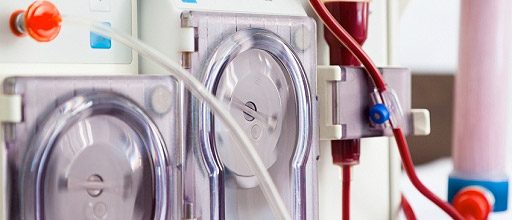
More patients die from kidney attacks than heart attacks
More patients die from acute kidney attack than heart attacks, Australian researchers have found to their surprise. A study published today looking at 1058 patients across Australia and New Zealand found only one third of acute kidney attack patients were still alive, 3.5 years after diagnosis.
Up to 50,400 Australians and 11,200 New Zealanders a year are diagnosed with acute kidney attack which, when requiring dialysis, is the most expensive hospital admission.
Acute kidney attack can be caused by x-ray contrast fluid, severe infection, surgical procedures and sudden drops in blood pressure.
Study leader Associate Professor Martin Gallagher, from the George Institute for Global Health and the University of Sydney, said: “We were surprised by our findings. This is a higher death rate than that seen in recognised high risk conditions such as heart attack. The burden of acute kidney attack is increasing and it is much more common than the chronic kidney disease that requires long term dialysis.”
"It is a common complication during hospitalisation and is associated with high death rates, ill health, and prolonged stay (and therefore cost)," said Associate Professor Gallagher.
Kidney Health Australia Medical Director Tim Matthew said: "We urgently need more resources and pathways to help patients who suffer acute kidney attack."
"There are 55,000 heart attacks in Australia per year. Not many realise there are around 50,000 acute kidney attacks – almost as many as heart attacks – and more people actually die from acute kidney attacks than from heart attacks. Yet it doesn’t receive nearly the same attention or resourcing, and this must become a priority."
"Moreover, the frequency of acute kidney attack is increasing in Australia, due to the increasing number of complex patients in Australian hospitals who have surgery, or other causes of ill health that are predisposed to injure the kidneys," Dr Mathew said.
The study, published today in PLOS Medicine, also broke new ground by showing that, in the longer term, higher doses of continuous dialysis for acute kidney attack patients did not reduce the high death rates.
This is significant as the treatment intensity is reflected in the cost to the healthcare system.
"We looked at current treatment methods for these patients, but found they don’t work. What we urgently need now is to find new treatments and approaches."
The study also found that surviving patients had very high rates of ongoing kidney disease (such as about 40 per cent with protein in urine) which is an important risk factor for later medical problems, including kidney failure and heart disease.
Associate Professor Gallagher says these post-attack findings will increase the focus upon survivors of acute kidney injury. "It may also see a focus upon new treatments already widely used to prevent progression of chronic kidney disease - for example ACE inhibitors, RAS blockers - as a way of improving outcomes."
Associate Professor Gallagher and his team are now working on other studies looking at prevention of acute kidney attack from radio-contrast use, which accounts for up to 11 per cent of hospital-acquired acute kidney attack. Contrast agents used in x-rays are administered to millions of patients annually worldwide. Patients who are dehydrated or older and those with decreased renal function, heart failure, hypertension and diabetes are at highest at risk of contrast-induced acute kidney injury (CI-AKI).
"One of the challenges for prevention is timing, as the renal injury is usually only evident after the primary cause has been going on for some time 24 to 48hrs or more," said Associate Professor Gallagher.


